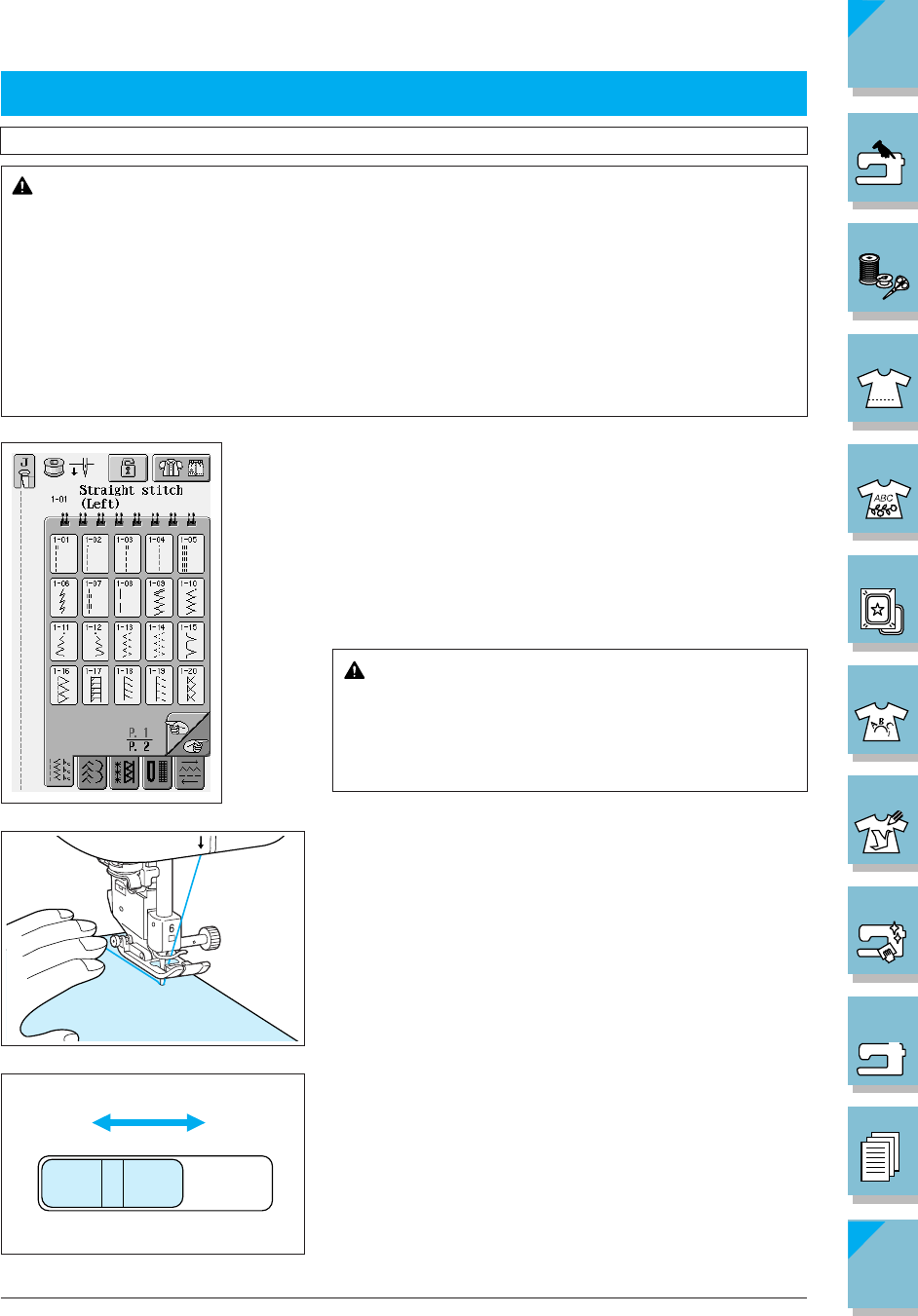
Getting Ready to Sew 2-1
1 —
2 —
3 —
4 —
5 —
6 —
7 —
8 —
?
!
9 —
CONTENTS
Index
Chapter 2 Getting Ready to Sew
TRIAL SEWING
Basic Sewing
CAUTION
• To avoid injury, pay special attention to the needle while the machine is in operation.
Keep your hands away from moving parts while the machine is in operation.
• Do not stretch or pull the fabric during sewing. Doing so may lead to injury.
• Do not use bent or broken needles. Doing so may lead to injury.
• Take care that the needle does not strike basting pins or other objects during sewing.
Otherwise, the needle may break and cause injury.
• If stitches become bunched, lengthen the stitch length setting before continuing sew-
ing. Otherwise, the needle may break and cause injury.
1. Turn on the main power switch, and push the “Needle
Position” button to raise the needle.
2. Press a stitch selection key to select a stitch.
3. Install the correct presser foot. The symbol of the cor-
rect presser foot will be displayed in the upper left cor-
ner of the LCD display.
CAUTION
Always use the correct presser foot. If the wrong
presser foot is used, the needle may strike the
presser foot and bend or break, resulting in in-
jury.
4. Set the fabric under the presser foot. Hold the fabric
and thread ends in your left hand, and turn the bal-
ance wheel to set the needle in the sewing start posi-
tion.
* The black button on the left side of presser foot “J”
should be pressed only if the fabric does not feed or
when sewing thick seams. Normally, you can sew with-
out pressing the black button (See page 2-4).
5. Lower the presser foot.
* You do not have to pull up the bobbin thread.
6. Adjust the sewing speed with the speed control lever.
* You can use this lever to adjust sewing speed during
sewing.
1 Slow
2 Fast
1
2


















